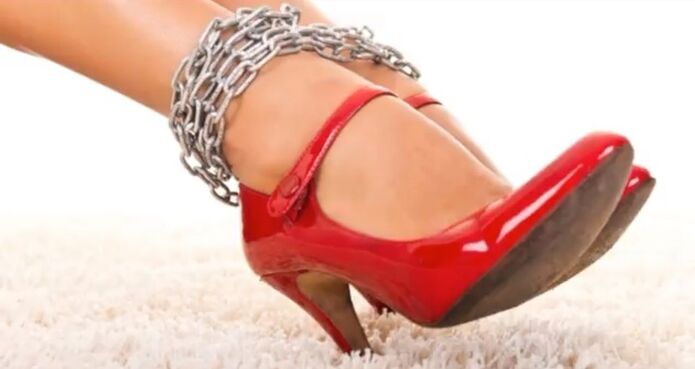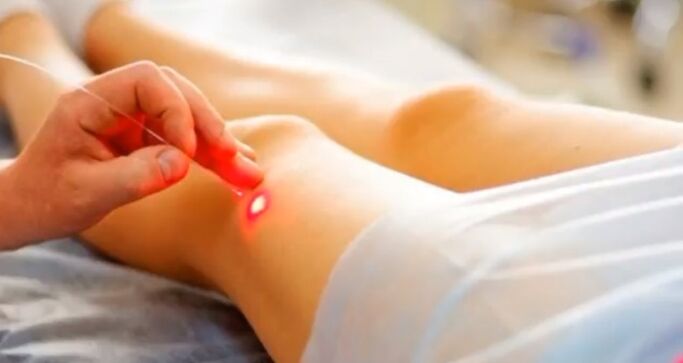Varicose veins or varicose veins are a pathological process that many face. In most cases, the disease affects the vessels of the legs, which leads to elongation and deformation, and thinning of the vessel walls. In addition, the valves located inside the veins cease to perform their full functions, disrupting systemic circulation and stagnating blood in the veins.
As a result of the described factors, the blood vessels become enlarged and appear on the surface through the skin. As a result, an entire network of blood vessels is visible on the surface of the skin, often with nodules and trophic ulcers. However, in addition to aesthetic disorders, the problem is much deeper and very often accompanied by painful feelings.
The nature of varicose vein pain
First, it is important to understand that the term "very often" does not mean that pain is accompanied by varicose veins in 100% of cases. Many depend on a number of factors, the individual characteristics of the patient’s body, and even at later stages in the progression of the pathological process, there may be no pain.
When classifying painful feelings, we first consider their localization:
- In most cases, pain syndrome is localized directly at the site of vascular lesions, their deformation.
- In terms of frequency of localization, the area of the gastrocnemius muscle is in second place, while the pains themselves are located closer to the popliteal region of the foot.
- The lowest probability of localization of pain syndrome goes to the ankle area.

Of course, as the pathological process progresses, the likelihood of pain in the legs increases. This is due to the worsening condition of the blood vessels, their growth, the progress of stagnant processes and the corresponding increase in vascular pressure. Ultimately, the pressure can increase so much that the walls of the vessel cannot withstand it, threatening the development of internal bleeding, hematomas and trophic ulcers.
Accordingly, the nature of the pain depends on the extent of the disease:
- In the initial stage, the painful or rather unpleasant sensations of a pulling or squeezing nature are caused by swelling of the legs. It is important to understand that in addition to blood flow disturbances, fluid remains in the legs, causing swelling. In the initial stage, edema occurs intermittently, more often in the evening, and the discomfort is caused by fatigue, walking in daytime shoes, and, in extreme cases, skin tightness.
- The fact of fatigue deserves special attention. With varicose veins, the legs get tired faster. Initially, this is expressed during prolonged physical exertion during the day (if the patient is standing for a long time, walking a lot, etc. ). However, as the disease progresses, fatigue occurs more frequently and more intensely, resulting in characteristic painful feelings. In this case, the pain is dull, pulling, or aching.
- Around the second stage of the disease, with deterioration of the condition of the veins, more severe deformity of the valves, and moderate dysfunction of the valves, patients complain of the effect of the severity. In this case, the pain is also called breaking, in some cases acute. This is due to increasing pressure in the blood vessels, and if it is enough to go to bed at first and put your foot on a hill for the pain to go away, you will have to deal with them in the future.
- Most likely, pain syndrome develops and its increased intensity progresses to the final, fourth stage of varicose veins. At this stage, vascular formation and vascular pressure reach their peak.
It is difficult to describe more precisely the characteristics of painful feelings with the varicose veins of the legs. This is due to the individual characteristics of each patient's body as well as the characteristics of the course of the disease. However, the pain is felt as follows:
- Stupid.
- Pull.
- Sore.
- Crack.
- Compressor.
- Sharp.
- Similar to overhead.
In the second, and more often third, stage of the pathology, pain is accompanied by muscle cramps, which disturb patients mainly during sleep at night.

Causes of painful feelings
Understanding where varicose vein pain comes from can help you treat this problem more effectively or prevent it from happening. So the pains occur for the following reasons:
- Abnormalities of the vascular system slow down blood circulation in certain areas of the veins. This leads to a decrease in blood flow, which results in a lack of oxygen and pain.
- Blood circulation helps to remove waste products that the body produces continuously in small amounts. Due to the reduction and stagnation of blood outflow, the breakdown products can be removed slowly, leading to the appearance of toxins that are toxic to living cells, a process that also causes painful sensations.
- Trophic disorders, which occur in the late stages of varicose veins and only worsen as the disease progresses, causing more and more acute pain, also contribute to the onset of pain.
The pain is exacerbated by physical exertion, leg fatigue, and in most cases especially intensified in the afternoon or evening.
Methods of treating the pathology
In order to completely eliminate the pain, all forces should be directed to the treatment of the pathological process. To do this, you should consult a doctor who will make a diagnosis that will prescribe the most appropriate treatment for your patient.
The treatment lasts for a certain period of time, during which the patient is in pain. Therefore, it is important to understand not only how to treat varicose veins, but also how to relieve pain.
First aid in the fight against pain
Elimination of pain is only a symptomatic part of the treatment, in most cases it does not affect the solution of the main problem - the varicose veins.
Nevertheless, it is very important to eliminate the pain, consider the main ways to deal with uncomfortable and painful feelings:
- In the early stages of the disease, the pain is unstable, its intensity is rather low, and it occurs mainly in the evening. In this case, it is enough to take a supine position and lay the foot on a pillow, or simply rest it against the wall so that the feet are above body level. This position facilitates blood flow, thereby reducing pain and swelling.
- It is also very useful to do a light massage, kneading the lower limbs with massaging, rubbing movements. Remember, you can stretch your legs during the day, which is very helpful in the later stages of developing the disease.

Traditional methods of analgesia
It is advisable to take medication in case of constant disturbing severe pain, as well as in cases where there is no possibility of self-massage or relaxation. Of course, only a doctor can prescribe medication, but in most cases the following medications are used:
- Special devices in the form of gels - mainly non-steroidal anti-inflammatory drugs (NSAIDs), which are effective in relieving pain and have a pronounced anti-inflammatory and moderate antipyretic effect.
- In some cases, you can resort to painkillers, but in the case of varicose veins, their effect is insignificant and short-lived. These are mainly painkillers and antispasmodics.
- If your pain is accompanied or made worse by cramps, you may want to discuss the use of muscle relaxants with your doctor to help reduce muscle cramps.
- In addition, traditional methods of treating varicose pain in the legs include wearing special compression socks, stockings, or stockings. This method is considered to be the most effective in relieving pain and has the longest effect. These underwear should only be purchased at pharmacies and as it shows varying degrees of compression, consult your doctor first.
Folk remedies
There are also a number of methods in folk medicine to eliminate or prevent the pain caused by the development of varicose veins. Here are some of the most effective methods and recipes:
- Horse chestnut - the fruit of this tree must be used to make an alcoholic tincture. To do this, grind 100 grams of peeled chestnuts, place in a glass jar and pour 500 milliliters of vodka. Place the container in a dark place and allow to stir at room temperature for 7-8 days. The tincture is then filtered and rubbed into the feet before going to bed or even during the day if the pain hurts during the day.
- Products based on beeswax or propolis are highly effective in combating varicose veins. To prepare the medicine, take 80-90 grams of propolis, grind and pour 300 milliliters of medical alcohol into a glass jar. The drug is infused for 30 days or until the propolis is completely dissolved, during which time it is stored in a dark place with regular shaking. When the medicine is ready, you can rub your feet or apply body lotions.
Prevention of pain
It is also important to understand that in the early stages of the disease, when the pain is not intense or rarely disturbed, but treatment has started, it is sufficient to follow recommendations to reduce the likelihood of painful feelings:
- Avoid wearing high heels.
- Make sure your shoes are comfortable.
- In the cold season, when working indoors, it is important to switch boots to lighter and more comfortable shoes.
- Try to minimize the stress on your feet.
- It is impossible to maintain a static position for a long time. If you stand a lot, try to sit more, but if you sit a lot, it’s important to walk regularly or at least warm up.
- During the day, try massaging your lower extremities, a 5 minute light massage will protect you from the pain during the day.
- It is also important to have a healthy lifestyle, easy sports, eating right, giving up bad habits, and so on.












































